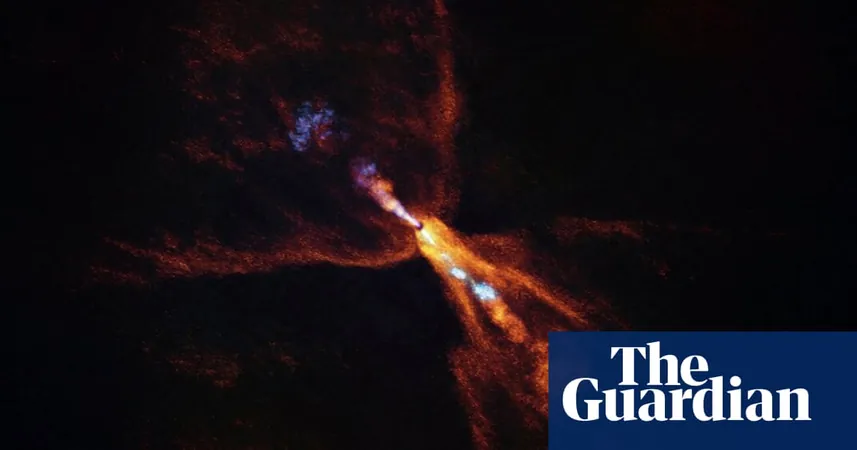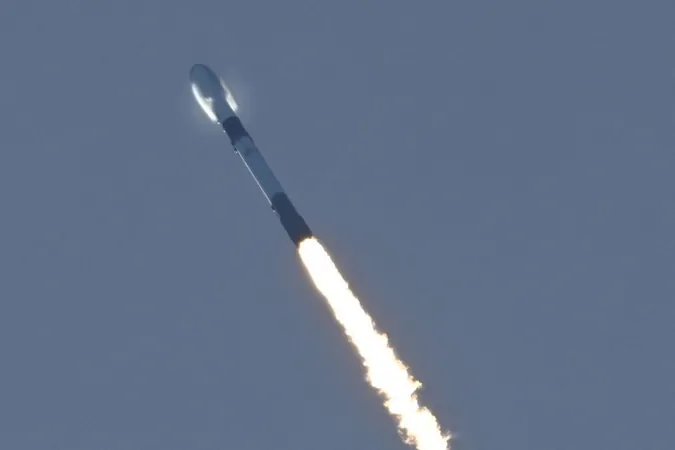
Astronomers Capture Unprecedented Moment: Birth of a New Solar System!
2025-07-16
Author: Amelia
A Cosmic Milestone in Planet Formation
In an exciting breakthrough, astronomers have detected the earliest stages of rocky planet formation surrounding a baby star, giving us a rare glimpse into the cosmic beginnings of our own solar system.
Known as Hops-315, this young star is only 100,000 to 200,000 years old and located 1,370 light-years away. Thanks to the remarkable collaboration between NASA's Webb Space Telescope and the European Southern Observatory in Chile, scientists have discovered solid particles forming in the gas circling this fledgling sun-like body.
A Peek into 'Time Zero'
Melissa McClure from Leiden Observatory, who spearheaded the international research team, stated, "We’ve captured a direct glimpse of the hot region where rocky planets like Earth are born." This discovery marks a significant moment that astrophysicists have long anticipated—an actual look at the initial steps of planet formation.
The Ingredients for Earth-like Planets
In this groundbreaking research published in the journal *Nature*, critical elements were identified, including silicon monoxide gas and crystalline silicate minerals—similar to the materials that formed the solid bodies in our solar system over 4.5 billion years ago. This formation process occurs in a region analogous to the asteroid belt between Mars and Jupiter, suggesting a complex interplay of cosmic materials.
Lighting Up the Cosmos
For the first time, astronomers have observed the condensation of hot minerals around a young star, a phenomenon not previously documented. McClure noted, "Our study shows that this could be a common process during the earliest stage of planet formation." The stunning images captured by the ESO’s Alma telescope network reveal this nascent solar system glowing vibrantly against the dark expanse of space.
What Lies Ahead for Hops-315?
It's still unclear how many planets may eventually form around Hops-315. If its gas disk is as expansive as the sun’s, we could be looking at a system with up to eight planets in another million years!
A Call to Explore More!
Purdue University’s Merel van ’t Hoff, a co-author of the study, is eager to investigate more emerging planetary systems. By expanding their search, astronomers hope to uncover similarities that could lead to understanding the essential processes behind the formation of Earth-like worlds.
"Are there Earth-like planets out there, or are we so special that such occurrences might be rare?" van ’t Hoff poses a tantalizing question that sparks curiosity about the nature of our place in the universe.
This revolutionary discovery not only sheds light on the birth of new worlds but also invites further exploration and understanding of the majestic processes that govern our cosmos.









 Brasil (PT)
Brasil (PT)
 Canada (EN)
Canada (EN)
 Chile (ES)
Chile (ES)
 Česko (CS)
Česko (CS)
 대한민국 (KO)
대한민국 (KO)
 España (ES)
España (ES)
 France (FR)
France (FR)
 Hong Kong (EN)
Hong Kong (EN)
 Italia (IT)
Italia (IT)
 日本 (JA)
日本 (JA)
 Magyarország (HU)
Magyarország (HU)
 Norge (NO)
Norge (NO)
 Polska (PL)
Polska (PL)
 Schweiz (DE)
Schweiz (DE)
 Singapore (EN)
Singapore (EN)
 Sverige (SV)
Sverige (SV)
 Suomi (FI)
Suomi (FI)
 Türkiye (TR)
Türkiye (TR)
 الإمارات العربية المتحدة (AR)
الإمارات العربية المتحدة (AR)